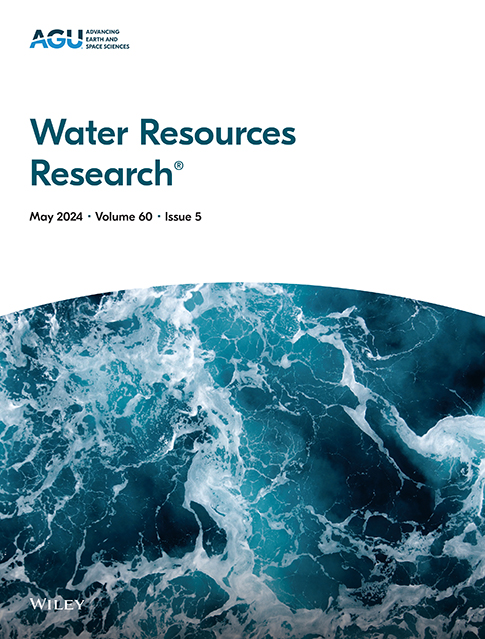网格排列中任意约定对固定笛卡尔洪水模型中洪水预测不确定性的量化
IF 5
1区 地球科学
Q2 ENVIRONMENTAL SCIENCES
引用次数: 0
摘要
通过采样和插值激光雷达数据到方形网格上生成的数字高程模型可以产生可靠的洪水预测。然而,网格排列中的任意约定往往会给洪水预测带来不确定性。因此,我们的研究使用蒙特卡罗方法和洪水模型LISFLOOD-FP来量化这种不确定性,以生成多个洪水模拟用于分析。模拟是通过转换不同分辨率(2米、5米、10米和20米)的正方形网格的对齐(北平移、东平移、东北平移、旋转以及旋转和平移的组合)来生成的。我们还使用了不同的洪水情景(5年、10年、20年、50年、80年和1000年的重现期)来观察特定事件中的不确定性如何变化。结果表明,网格对齐在洪水预测中引入了不确定性,导致洪水范围(7%)和被淹建筑物数量(27%)的显著变化。由于主要河流与网格线对齐,水深、洪水范围和被淹没建筑物的高可变性与网格旋转有关,而不是与平移有关。由于激光雷达点在像素之间的移动减少,更精细的分辨率在水深、被淹没区域和被淹没建筑物数量方面的可变性更小。对于每一种洪水情景,如果仅在少数几个模拟中水超过一定的阈值,水深和淹没面积的变化就会增加。然而,如果它只填充在较小的洪水事件中可以被水量淹没的位置,它们就会减少。被淹建筑物的数量取决于被淹地区是否为住宅区。本文章由计算机程序翻译,如有差异,请以英文原文为准。
Quantifying Uncertainty in Flood Predictions in Fixed Cartesian Flood Model Due To Arbitrary Conventions in Grid Alignment
Digital elevation models generated by sampling and interpolating LiDAR data onto a square grid can produce reliable flood predictions. However, the arbitrary conventions in grid alignment that can introduce uncertainty in flood predictions are frequently overlooked. Hence, our research quantified this uncertainty using a Monte Carlo approach and flood model LISFLOOD-FP to generate multiple flood simulations for analysis. The simulations were generated by transforming the alignments of the square grid (North translation, East translation, North-East translation, rotation, and a combination of rotation and translation) with different resolutions (2-, 5-, 10-, and 20-m). We also used different flood scenarios (5-, 10-, 20-, 50-, 80-, and 1,000-year return periods) to observe how the uncertainty changes in a specific event. Results demonstrate that the grid alignment introduces uncertainty in flood predictions, leading to significant variability in flood extent (7%) and the number of flooded buildings (27%). Because the main river aligns with the grid lines, higher variability in water depths, flood extent, and flooded buildings is associated with grid rotation than translation. Finer resolutions have less variability in water depths, flooded areas, and the number of flooded buildings owing to the decreased movement of LiDAR points between pixels. For each flood scenario, if water overtops certain thresholds in only a few simulations, variations in water depths and flooded areas increase. However, if it only fills locations that can be flooded by water volume in smaller flood event, they decrease. The number of flooded buildings depends on if the inundated regions are residential.
求助全文
通过发布文献求助,成功后即可免费获取论文全文。
去求助
来源期刊

Water Resources Research
环境科学-湖沼学
CiteScore
8.80
自引率
13.00%
发文量
599
审稿时长
3.5 months
期刊介绍:
Water Resources Research (WRR) is an interdisciplinary journal that focuses on hydrology and water resources. It publishes original research in the natural and social sciences of water. It emphasizes the role of water in the Earth system, including physical, chemical, biological, and ecological processes in water resources research and management, including social, policy, and public health implications. It encompasses observational, experimental, theoretical, analytical, numerical, and data-driven approaches that advance the science of water and its management. Submissions are evaluated for their novelty, accuracy, significance, and broader implications of the findings.
 求助内容:
求助内容: 应助结果提醒方式:
应助结果提醒方式:


